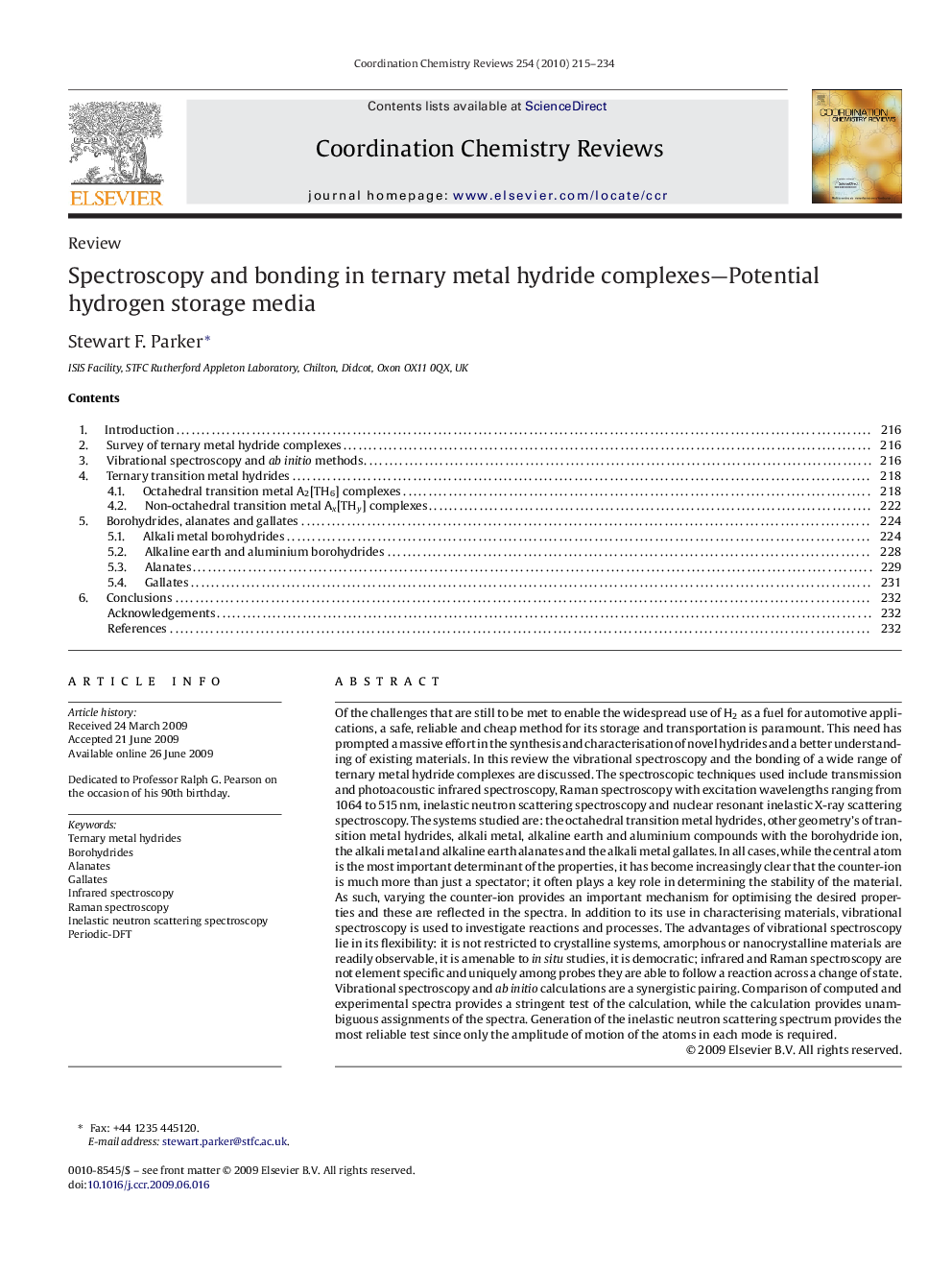| Article ID | Journal | Published Year | Pages | File Type |
|---|---|---|---|---|
| 1301193 | Coordination Chemistry Reviews | 2010 | 20 Pages |
Of the challenges that are still to be met to enable the widespread use of H2 as a fuel for automotive applications, a safe, reliable and cheap method for its storage and transportation is paramount. This need has prompted a massive effort in the synthesis and characterisation of novel hydrides and a better understanding of existing materials. In this review the vibrational spectroscopy and the bonding of a wide range of ternary metal hydride complexes are discussed. The spectroscopic techniques used include transmission and photoacoustic infrared spectroscopy, Raman spectroscopy with excitation wavelengths ranging from 1064 to 515 nm, inelastic neutron scattering spectroscopy and nuclear resonant inelastic X-ray scattering spectroscopy. The systems studied are: the octahedral transition metal hydrides, other geometry's of transition metal hydrides, alkali metal, alkaline earth and aluminium compounds with the borohydride ion, the alkali metal and alkaline earth alanates and the alkali metal gallates. In all cases, while the central atom is the most important determinant of the properties, it has become increasingly clear that the counter-ion is much more than just a spectator; it often plays a key role in determining the stability of the material. As such, varying the counter-ion provides an important mechanism for optimising the desired properties and these are reflected in the spectra. In addition to its use in characterising materials, vibrational spectroscopy is used to investigate reactions and processes. The advantages of vibrational spectroscopy lie in its flexibility: it is not restricted to crystalline systems, amorphous or nanocrystalline materials are readily observable, it is amenable to in situ studies, it is democratic; infrared and Raman spectroscopy are not element specific and uniquely among probes they are able to follow a reaction across a change of state. Vibrational spectroscopy and ab initio calculations are a synergistic pairing. Comparison of computed and experimental spectra provides a stringent test of the calculation, while the calculation provides unambiguous assignments of the spectra. Generation of the inelastic neutron scattering spectrum provides the most reliable test since only the amplitude of motion of the atoms in each mode is required.
